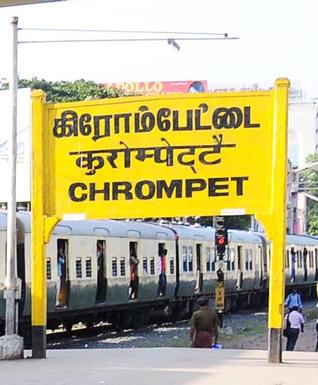
Travelling in the U.S., I was asked by Rayan Krishnan if I had read Sam Kean’s book, The Disappearing Spoon. A bestseller, it deals with the history of the world as seen from the elements of the Periodic Table. I found the work unputdownable and while reading it, pondered on the chemical elements that had an impact on our city, Madras.
The first were undoubtedly gold (Au) and silver (Ag), brought in large quantities by the East India Company to purchase the cloth, for which the region was so famous. Most of the company officers were corrupt and lined their pockets with the same metals, retiring to England with enormous fortunes. At least one, Governor Thomas Pitt, battened on the sale of a large diamond (just C, if you look at it from the chemistry angle).
That fortune was enough to fund the political ambitions of his descendants William Pitt the Elder and the Younger, both of whom became Prime Ministers of England.
Living in Madras meant a whole host of medical problems for the British, thanks to their unhealthy living. Excessive indulgence in food and drink was a common problem and that resulted in digestive disorders. A common treatment for this involved antimony (Sb) pills. As to what these did to the intestines is a bit of a mystery, but they were considered the best laxatives. ‘Antimony pearls’ were used in the treatment of eye disorders too.
Far more widespread was the use of the dreaded mercury (Hg). The Company officers and those of the army were largely single during their tenure here, which meant that many contracted venereal diseases. Mercury was the only known cure for these. Teeth and hair fell out, a symptom that came to be associated with the disease and not the cure, and yet for years, mercury remained in use, as internal medicine and as an ointment when mixed with iodine (I). Writing in the Madras Quarterly Journal of 1866, Thomas Lowe railed against the modern tendency of being wary of mercury. He recommended it for a host of other fevers as well. Another chemical used for medicinal purposes was Arsenic (As). An accidental overdose, caused by an error while compounding in 1693, led to the death of a Mr Wheeler, thereby necessitating the first post-mortem in Indian history, performed by Dr. Edward Bulkley, in Madras.
The early 20 century saw two elements coming to the fore. Sir Alfred Chatterton, Principal of the College of Engineering, pioneered the usage of aluminium (Al) for utensils of daily use. Later, as the first Director of Industries, Government of Madras, he set up the Indian Aluminium Company, now known as Indal, and with that, the aluminium wok became ubiquitous in our homes. It was also Chatterton who perfected the chrome tanning process for leather that involved the usage of Chromium (Cr) salts. The Chrome Leather Factory that came up consequently may be closed today, but it gave rise to an entire colony — Chromepet.
source: http://www.thehindu.com / The Hindu / Home> Features> MetroPlus> Society / by Sriram V / Chennai – September 11th, 2015